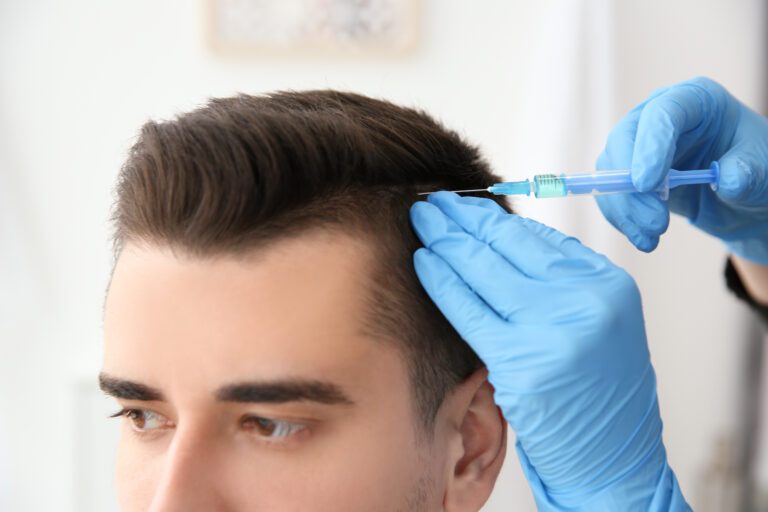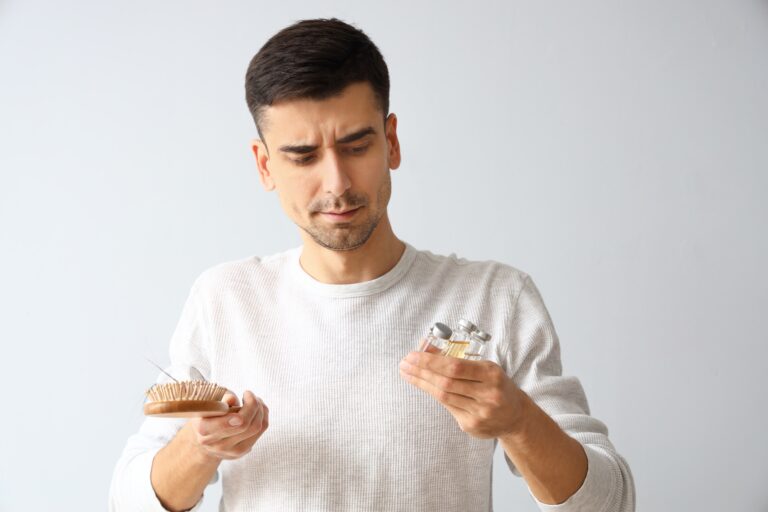¿Es inevitable la pérdida de peso con dutasterida? Esto es lo que debe saber
A la mayoría de la gente no le gustan demasiado los tratamientos que tardan mucho tiempo en mostrar una mejora significativa de sus dolencias. Pero, ¿y si el tratamiento causa más deterioro antes de que las cosas mejoren? Debe de ser duro. De hecho, esto es exactamente lo que ocurre cuando se utiliza Dutasteride.
La descamación de dutasterida es un efecto secundario común que muchos usuarios experimentan tras unas semanas de uso de ese medicamento. El periodo de descamación rápida puede durar varias semanas hasta que el organismo del usuario se adapta a los cambios hormonales provocados por el fármaco.
He aquí una explicación detallada de por qué se produce la muda de Dutasterida y qué esperar durante ese tiempo.
¿Cómo actúa la dutasterida?
La dutasterida es un medicamento que suele recetarse para tratar una forma benigna de agrandamiento de la próstata. También es un inhibidor de la 5𝞪 reductasa (5ARI), lo que significa que puede reducir la conversión de testosterona en dihidrotestosterona (DHT).
Durante algún tiempo, los especialistas pensaron que era la testosterona la causante de la caída excesiva del cabello. Sin embargo, los investigadores descubrieron que la DHT es el factor responsable de alopecia androgénica. Desde entonces, no han dejado de buscar formas de impedir que la DHT llegue a los folículos pilosos.
Una de las mejores formas es evitar que se forme. Dutasteride hace precisamente eso. El 5ARI evita que 90% de DHT llegue a los folículos pilosos.
Este uso es off-label, y el tratamiento de la caída del cabello utilizando Dutasteride o medicamentos similares aún no ha sido aprobado por la FDA.
¿Por qué algunas personas experimentan descamación?
La solidez de los folículos pilosos es el principal factor que mantiene el cabello fuerte, sano y denso. Un gran número de hombres, casi la mitad de todos los de 40 años, experimentan una caída natural del cabello en lo que se conoce como alopecia androgénica o calvicie de patrón masculino.
Esta caída natural está causada principalmente por la hormona dihidrotestosterona (DHT). Esta sustancia es un derivado de la testosterona, y a menudo debilita el folículo piloso hasta el punto de que ya no puede crecer pelo.
La caída se produce cuando se bloquea la DHT y se reinicia el ciclo de crecimiento del cabello. El pelo pasa repentinamente de la fase de reposo (telógena) a la fase de caída (exógena).
Cabe señalar que las personas responden de forma diferente a los cambios hormonales repentinos. Algunos individuos son más sensibles a estas fluctuaciones y responden con una caída del cabello más rápida y en mayor cantidad.
Además, los factores genéticos desempeñan un papel importante en la forma en que los folículos pilosos responden al exceso y a la disminución de DHT. En ambas situaciones, algunos individuos están predispuestos a desprenderse del cabello en la fase de transición.
Otro factor que debe tenerse en cuenta es el tiempo que una persona ha estado experimentando la pérdida de cabello. Tras un largo periodo, la DHT miniaturiza y debilita los folículos pilosos hasta el punto de que no pueden retener un cabello sano y fuerte durante demasiado tiempo. En ese caso, se desprenden más fácilmente.
¿Qué es la descamación relacionada con la dutasterida?
Dutasterida y otros tratamientos similares contra la caída del cabello contienen sustancias que inhiben la conversión de testosterona en DHT, salvando así los folículos pilosos y permitiendo que crezca un cabello sano y denso.
Este tratamiento tarda un tiempo antes de que se aprecie alguna mejora. Y hay un problema aún mayor; al principio, la Dutasterida acelera el ciclo de crecimiento del cabello, lo que debilita los cabellos maduros. Estos cabellos que se desprenden pronto son sustituidos por otros más sanos que no se caen con facilidad.
¿Causa la Dutasterida caída del cabello?
Irónicamente, la Dutasterida podría provocar la caída del cabello en las primeras fases de la toma del medicamento. Es bastante común que los usuarios noten que su cabello se cae a un ritmo mucho mayor. Sin embargo, esta fase suele ser limitada y pronto empieza a crecer cabello nuevo y sano.
Hay que tener en cuenta que no todo el mundo experimenta descamación después del tratamiento. Además, la gravedad y la magnitud de la descamación no son las mismas para todos los usuarios.
¿Cuándo empieza la muda?
La muda suele comenzar entre 2 y 6 semanas después de iniciar el tratamiento con Dutasterida. Muchos médicos se refieren a esta fase inicial como la "caída de Dut". El tiempo varía de una persona a otra, ya que los ciclos de crecimiento del cabello son diferentes, así como la forma en que el cuerpo metaboliza la Dutasterida.
¿Cuándo termina la muda?
El derramamiento de Dustasteride es principalmente un efecto secundario temporal, y en realidad muestra que el medicamento está funcionando. Suele durar entre varias semanas y unos meses.
Naturalmente, tomar medicamentos anticaída que provocan la caída del cabello es un asunto frustrante. Sobre todo, si tarda más de unos meses. Es comprensible que algunos pacientes dejen de tomar Dutasteride, ¡justo antes de ver los resultados positivos del uso del medicamento!
La mayoría de los médicos recomiendan utilizar Dutasterida regularmente durante 6-12 meses antes de tomar una decisión definitiva sobre el tratamiento a largo plazo.
En conclusión
Ningún medicamento es perfecto ni está exento de efectos secundarios. La dutasterida no es diferente. Muchos usuarios experimentan una mayor caída del cabello al iniciar el tratamiento, pero esa fase no dura demasiado. La paciencia es la clave, ya que los resultados positivos tardan en aparecer.







